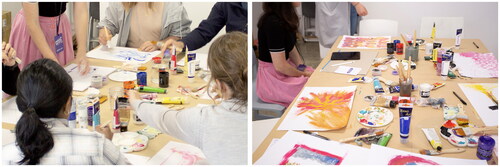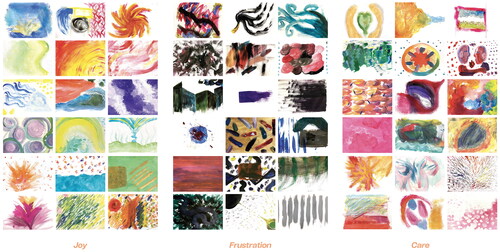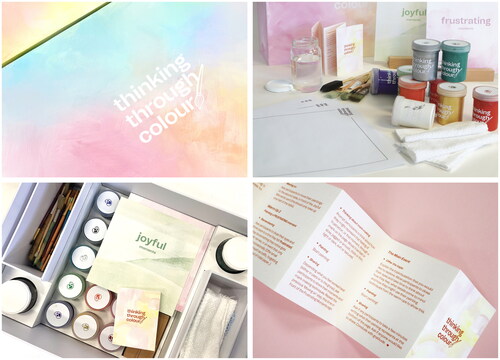Figures & data
Figure 1. Images from workshop one. Contour portraits as a quick warm-up exercise where an ‘artist’ looks at a person opposite and draws the contours of what they see in one continuous line (left) while not looking at their paper. Participants’ paintings using colours to represent ‘a good day’ (top right) and a bad day (bottom right).
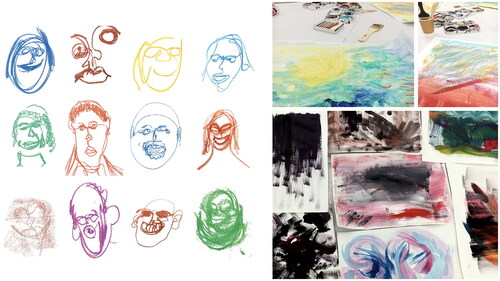
Figure 2. Improvements after the first workshop included paper cups filled with water for washing brushes that were too flimsy, small for larger brushes and were easily knocked over (left). These were replaced with larger recycled glass jars and could be shared between two participants. Layout changes to workshop table (right). Originally paint brushes were placed in the Middle of the table resulting in participants not knowing which to choose. Subsequently, a range of brushes were provided to each participant. Paint colours (primary) were initially limited, and few participants mixed their colours. A greater range of colours was subsequently provided, and mixing colours was encouraged. Initially, multiple sheets of paper were given at the start, but these became damaged during the exercises, so the paper was given out as needed. The paper towels used for cleaning (e.g. brushes) disintegrated easily and were replaced by absorbent cotton rags.
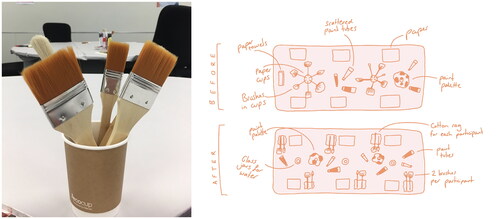
Figure 3. Revised painting toolkit set-up used in the second workshop (left). Joyful moments are being painted by participants in the second workshop (right).
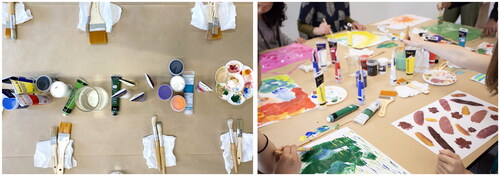
Figure 5. Examples of slides shown on an iPad in workshop three used to explain the purpose and process.
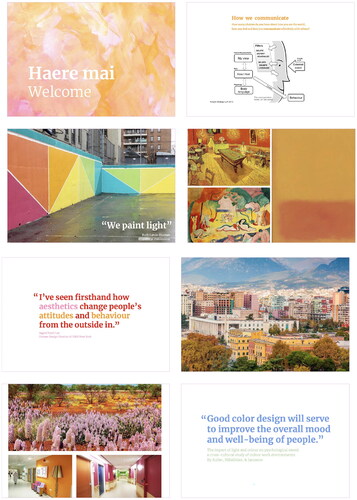
Table 1. Overview of key words, colours and topics from the co-design workshops.

